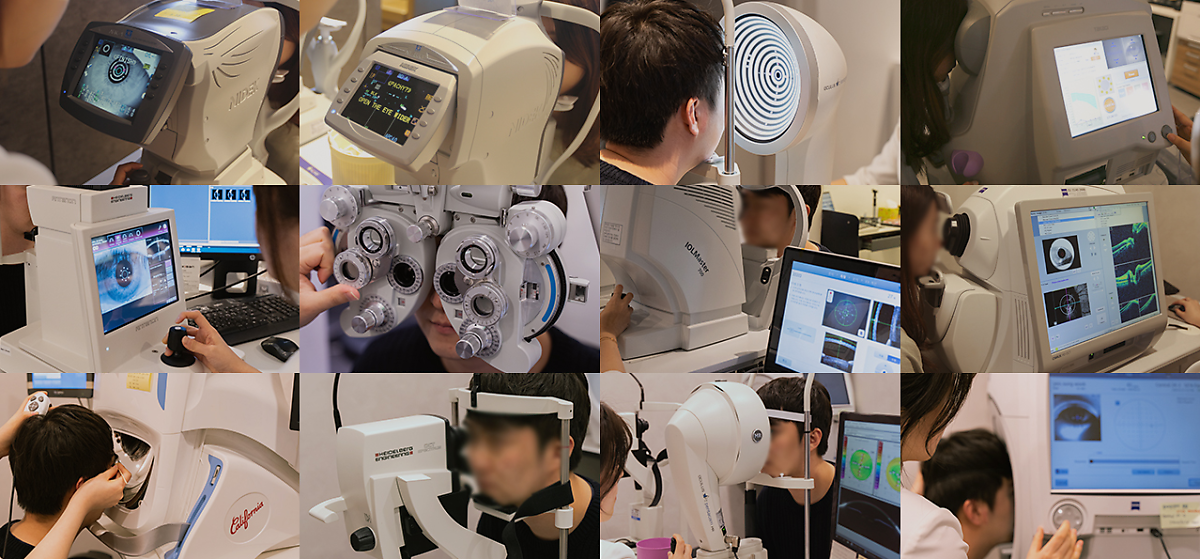SMILE LASIK Recovery – How Does It Compare to LASIK & LASEK? (2025)
Written by Keye Eye Clinic
2025.02.20

With the rise of remote work, online classes, and increased screen time, more people are experiencing eye strain and vision deterioration due to prolonged use of smartphones, PCs, and other digital devices. As a result, more individuals are turning to ophthalmology clinics for vision correction, with a growing interest in laser eye surgery. Among the available procedures, SMILE LASIK has gained significant popularity as an advanced vision correction method that minimizes the downsides of traditional LASIK and LASEK. Unlike LASIK which creates a corneal flap, or LASE, which has a longer recovery time, SMILE LASIK offers a minimally invasive approach with faster healing and fewer complications. So, what exactly is SMILE LASIK? Let's explore its key features, benefits, and important precautions before undergoing the procedure!
What is SMILE LASIK?
SMILE LASIK is a vision correction procedure that combines the advantages of both LASIK and LASEK. It involves removing a pre-shaped lenticule (corneal tissue) through a minimal 2.0mm corneal incision using a laser. Unlike traditional LASIK, SMILE LASIK does not create a corneal flap, which reduces flap-related complications and allows for a faster recovery with minimal discomfort (typically 1–2 days). However, because SMILE LASIK uses a lower-energy laser to minimize corneal damage, the procedure requires a highly skilled and experienced surgeon to ensure the safe and precise removal of the lenticule.
The equipment used for SMILE LASIK is VisuMax, developed by Carl Zeiss. This device allows surgery to be performed on the inner cornea. By simultaneously creating a corneal flap and removing the necessary amount of corneal lenticule, vision correction is achieved. A key advantage of SMILE LASIK is its precise laser technology, which enables accurate handling of the corneal stroma. This makes it possible to correct vision even for high myopia patients who may not be suitable for traditional LASIK or LASEK.
SMILE LASIK, which causes minimal corneal damage, does not involve corneal ablation or flap creation like LASIK or LASEK. As a result, it helps prevent corneal haze and myopia regression, which can occur with traditional procedures. Additionally, for individuals who avoided LASIK or LASEK due to concerns about dry eye syndrome, SMILE LASIK is recognized as a satisfactory vision correction surgery that reduces the risk of dry eye complications.
To ensure a safe SMILE LASIK procedure, several key factors must be considered. First, it is essential to check whether the medical team has extensive experience and expertise gained through years of performing the procedure. Additionally, the safety and reliability of the equipment used for SMILE LASIK should be thoroughly reviewed. A detailed consultation with the surgeon is crucial before making a final decision. Prior to surgery, a comprehensive eye examination must be conducted to assess vision, corneal condition, retina health, and any underlying eye diseases. While SMILE LASIK offers advantages in terms of reduced pain and faster recovery compared to other vision correction procedures, pre- and post-surgery precautions must be carefully followed for optimal results. Although VisuMax equipment ensures precise execution, the final step of the surgery relies on the skill of the surgeon. Therefore, it is important to choose an experienced medical team with years of surgical expertise and in-depth knowledge, ensuring a safe and successful outcome.

In addition, it is crucial to conduct a detailed eye examination, considering factors such as existing vision, corneal thickness, condition, shape, and pupil size. After completing the examination, the most suitable vision correction procedure should be selected based on the results, ensuring that the surgery aligns with the specific needs of the patient’s eyes.
Moreover, just because SMILE LASIK offers fast recovery and a high level of safety does not mean that eye care can be neglected. It is essential to maintain good eye care habits in daily life to ensure long-term success. Since each patient has unique eye conditions, including differences in corneal thickness and overall eye health, undergoing a comprehensive examination is crucial. Additionally, the procedure should be carefully planned by considering factors such as the appropriate laser power setting, correction values, and the degree of astigmatism, ensuring a personalized and precise approach for optimal results.
TOP 5 Eye Clinics in Korea